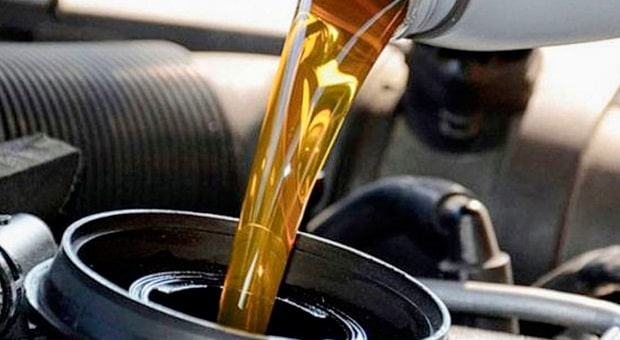

There are so many different types and grades of oil available today that choosing the right one for your car, whether it’s a 2019 Dodge Challenger Hellcat or a 1945 Jeep Willys, can be confusing. Motor oils are classified by weight or viscosity, service rating and if they’re considered “energy conserving.” RacingJunk spoke with several engine builders and oil engineers about how to choose the proper engine oil for your car. First we’ll talk about an oil’s weight or viscosity, followed by its service rating and what receiving the designation as an energy conserving oil means. Finally, we’ll talk about the advice we got from several professionals.
An oil’s viscosity is its resistance to flow and can be either one two-digit number (20, 30, 40, 50, etc.) or two numbers separated by the letter “W” (5W-30, 10W-40, 20W-50, etc.). How well the oil flows at zero degrees (0º) Fahrenheit is its viscosity rating in single viscosity (20, 30, 40, etc.) oils and the first number in multi-viscosity oils (those with two viscosity numbers like 10W-40), with thicker oils having higher viscosity ratings. So, oil with a viscosity rating of five is thinner than one rated at ten or 20.
Like maple syrup, motor oil is thick when cold and thin when hot. Oil engineers created additives that make multi-viscosity (multiviz) oils which reverse that, actually making oil thicker as it warms up. The oil’s thickness or resistance to flow at 212 º F (100ºC) is the second number in multi-viscosity ratings. The majority of motor oils on the market today are multiviz, with 5W-30, 10W-30, 10W-40, and 20W-50 being the most prevalent.
Multi-viscosity oils came about because most engine wear occurs before the oil comes up to operating temperature because the oil doesn’t flow well. Additives were created that lowered oil’s low temperature viscosity and increased its high temperature viscosity. Since the crankshaft is partly submerged in the oil, oil that’s thinner when cold is more fuel efficient because it doesn’t provide as much resistance to the crankshaft rotating. Oil with a low viscosity when cold (5W-30, for example) is considered “winter oil,” while that with higher cold and hot viscosity (20W-50) is considered “summer oil.”

The American Petroleum Institute (API) puts all motor oils through battery tests both in the laboratory and in engines, after which they’re given a rating. This Service Rating is represented by two characters, with “SL” being the current highest/best rating that motor oil can be given and indicating that the oil has passed tests showing control of high-temperature deposits. Previous ratings concerned resistance to foaming and detergent qualities, among other tests.
The “Energy Conserving” label can be misleading for many consumers, leading them to believe they’ll get better mileage with it. The label doesn’t guarantee improved mileage; it only indicates that the oil has passed some lab tests against a reference oil.
RacingJunk spoke with engineers from the API, car companies and a number of professional engine builders about choosing the right oil for your car and they were unanimous in saying that you should stick with the oil specified by the carmaker. This information can be found in the owner’s manual. Some carmakers even imprint it on the oil cap or an informational decal on the air cleaner or radiator support.
The viscosity and API Service Rating specified by the manufacturer weren’t come by arbitrarily – they’re the results of extensive testing and will provide the best lubrication and longest life of the engine as long as service intervals are adhered to.
The consensus regarding using full synthetics, synthetic blends and “regular” oils was also fairly equal. If the car’s manufacturer recommends a full synthetic or a blend, you should use what’s recommended. High performance engines often require synthetic motor oils, but your Toyota Camry doesn’t.
The last question we posed was regarding “high mileage” motor oils. These oils have additives to combat sludge while maintaining the optimal oil film over moving parts. The only differences in opinion about these oils were when you should make the switch, with the range being between 50,000 and 75,000 miles.


Leave a Reply